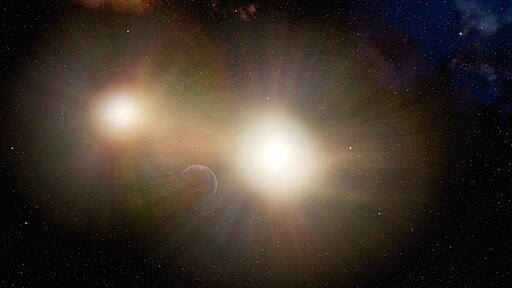Stellar chemical composition is one of the properties of stars based on their elemental abundance and dust condensation temperature. Detecting them has been challenging due to small amplitudes, unknown occurrence rates, and heterogeneous star samples. This means that stars born together with identical chemical compositions can facilitate the detection of stellar chemical composition.

(Photo: Wikimedia Commons/ International Gemini Observatory/NOIRLab/NSF/AURA/J. da Silva (Spaceengine))
Also known as 'planet signatures,' this chemical composition can be altered by swallowing planetary material. Recently, scientists discovered at least one in a dozen stars showing evidence of planetary ingestion.
Mystery of Unidentical Twins
In a new study, an international research team led by experts from the ARC Centre of Excellence for All Sky Astrophysics in 3D (ASTRO 3D) explored twin stars that travel together. They focused on a pair of stars classified as co-natal. These are not necessarily binary stars, although some of the twins were.
According to lead author Dr. Fan Liu, the twin stars they studied are born of the same molecular clouds, so they should be identical. However, they differ about 8% of cases, sparking curiosity among astronomers.
The research was made possible with the help of a large dataset gathered by the 6.5-meter Magellan Telescope in collaboration with the European Southern Observatory's Very Large Telescope. It also involves the 10-meter Keck Telescope located in Hawaii. The study is part of a larger collaboration called the Complete Census of Co-moving Pairs of Objects (C3PO) initiative.
Through a very high-precision analysis, the team was able to observe the chemical differences between the twin stars. The phenomenon was observed in about 8% of the 91 pairs of twin stars they investigated. Also known as main sequence stars, these stellar objects were in their prime of life, meaning they were not in their final phases like red giants.
Interpreting the Unusual Differences
They discovered that the difference in the stellar composition might be due to one of the twins swallowing planets. It could have also devoured planetary material and changed its composition. Dr. Liu noted that their analysis differs from previous studies where late-stage stars can devour nearby planets when the star becomes a giant ball.
Some experts doubt whether the stars engulf planets whole or devour protoplanetary material. However, Dr. Liu believes that both scenarios are possible. He emphasized that ingesting the entire planet is the favored scenario. Still, they cannot rule out that these stellar objects have also ingested much material from a protoplanetary disk.
The result of the study could have wide-ranging implications for studying the long-term evolution of planetary systems. In the past, scientists believed that such events could not happen. However, observations from this study suggest that it is possible, although the occurrence is not high.
Research findings presented in this study contribute to the key theme of ASTRO 3D research: the chemical evolution of the universe. They specifically shed light on the distribution of chemical elements and their subsequent journey, including the possibility of being consumed by stars.
RELATED ARTICLE: Stellar Duo Fated to Meet a Supernova End-Twin Stars Discovered in Henize 2-428
Check out more news and information on Star System in Science Times.




![Aspirin Supports Immune System in Detecting and Targeting Cancer [Study]](https://1721181113.rsc.cdn77.org/data/thumbs/full/53271/89/56/50/40/aspirin-supports-immune-system-in-detecting-and-targeting-cancer-study.jpg)









